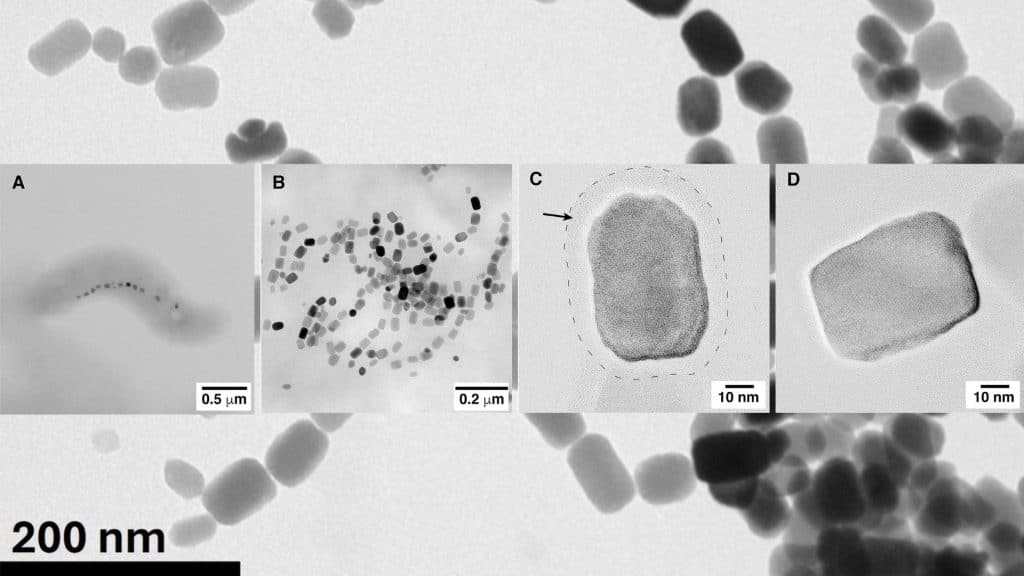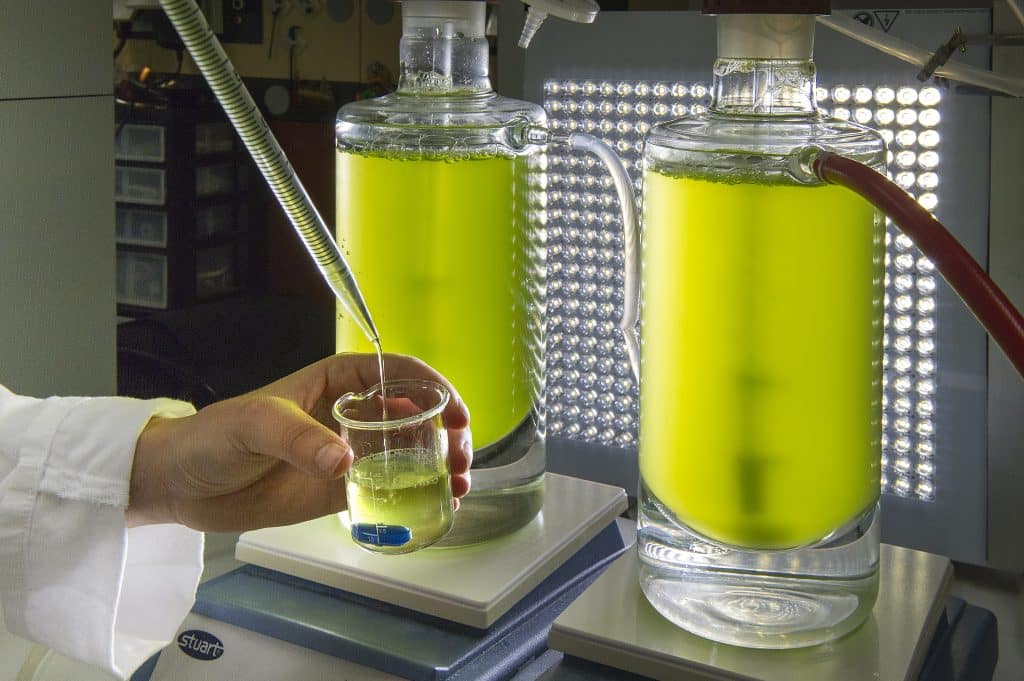The scientific journey behind naming a new bacterium

Isolated from a lake in Southern California, Magnetovirga frankelii is a newly identified species of magnetotactic bacterium recently characterized by researchers at BIAM. Beyond expanding our understanding of life, this discovery contributes to biodiversity preservation and opens up exciting possibilities around the bacterium’s ability to navigate using Earth’s magnetic field—a promising trait for developing innovative […]
Observing metals within living cells is possible!

Nanoscale Imaging An international team of researchers has reached a technological milestone by managing to directly observe interactions between metals and living cells at the nanoscale1 . Thanks to a novel X-ray imaging technique, this advancement provides a new means to study relationships between metals and living systems—from how metallodrugs work to the behavior of […]
Magnetite: tracing the hidden origins of life on Earth

A research team from BIAM, in collaboration with IPGP and l’IMPMC, has shown that the isotopic composition of iron found in certain magnetic crystals—produced by magnetotactic bacteria—could serve as a reliable indicator of biological origin. This work offers a promising new tool to distinguish fossil traces left by the first microorganisms, which appeared over 3 […]
Nuclear decontamination: a bacterium that captures strontium-90

As part of a French collaboration1, BIAM researchers have just demonstrated the decontamination capabilities of a cyanobacterium: Gloeomargarita lithophora, which captures strontium-90 (90Sr), a radionuclide present in power plant effluents. This discovery opens the way to highly effective, environmentally-friendly bioremediation. Co-discovered several years ago by IMPMC1 in a stromatolite from Lake Alchichica in Mexico, a […]
Bacteria form minerals with CO2

Microbial biodiversity A BIAM team has just revealed the diversity of bacteria that produce minerals composed of calcium carbonate inside their cells. This discovery could inspire innovative solutions for carbon capture or ecosystem preservation in the face of climate change, while inviting us to rethink the importance of these processes in natural environments. Imagine microscopic […]
A novel protein with dual function: a key for optimal carbon and energy storage in algal cells

Microalgae and Bioenergy BIAM researchers have identified a key protein, ABHD1, which plays a central role in the management of lipid droplets, the cell’s energy and carbon reservoirs. In addition to deepening our understanding of fundamental cellular mechanisms, this discovery could revolutionize algae engineering by improving cellular oil content, and opening up new perspectives in […]
When daughter cells take flight: thank you, kinase!

Microalgae and biomass BIAM scientists have identified the crucial role of a plant-specific kinase in regulating daughter cell hatching in microalgae. This breakthrough enables better management of cell wall degradation, facilitating the release of daughter cells and biomass production. One of the main challenges in using microalgae to produce fuel is to understand how to […]
i-PhD Grand Prix

Alcasun, the biosourced revolution: Exclusive interview with the winner Alcasun is a biotech start-up project targeting cosmetics, green chemistry and bioenergy markets. The founders of this future startup have succeeded in isolating an algal enzyme capable, in the presence of blue light, of converting fatty acids into hydrocarbons (or alkanes) for cosmetic use. Alcasun’s ambition […]
CO2 sequestration by algae:
the energy source behind the process unveiled

An international collaboration between BIAM researchers and the Carnegie Institution for Science in Stanford (USA) has revealed how solar energy is supplied to metabolic reactions of algal cells to fuel atmospheric CO2 fixation. This discovery provides an understanding of the fundamental basis for efficient CO2 sequestration by microalgae. These images show where the mitochondria are […]
Unlocking Plant Resilience: Evolutionary Synergy in Stress Adaptation

A groundbreaking mechanism enabling plants to optimize their photosynthesis has been unveiled by a scientific collaboration led by the BIAM. Remarkably, this discovery involves molecules of bacterial origin, and opens promising avenues for developing agriculture that is more resilient to climate change. Chlorophyll fluorescence images of plants for analysis of photosynthetic activity Photosynthesis, fundamental to […]